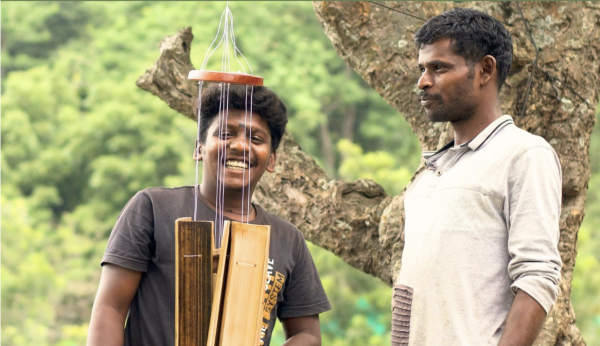Baroque Meets Boost at the Kaleidosonic Music Festival
For Conservatory students, College musicians, and community members interested in music, the Oberlin music scene can seem divided. College and community musicians may feel that their music is viewed as less important than the work done by Conservatory students. On the other hand, Conservatory students may feel that their dedication to either Jazz or Classical music shuts them away from other more contemporary genres.
To bridge this divide, Oberlin’s Kaleidosonic Music Festival, held this Saturday in Finney Chapel, showcases the variety and capability of every student and community member’s musical talents.
The idea of having a Kaleidosonic musical experience was first imagined by Tom Lopez, OC ’89, who is a professor of computer music and digital arts and chair of Technology in Music and Related Arts at Oberlin.
“I wanted to celebrate the legacy of Olly Wilson and John Clough, [both OC] ’53, who championed electronic music (Wilson) and computer music (Clough) at Oberlin Conservatory,” Lopez wrote in an email to the Review. “Wilson taught the first electronic music class at Oberlin, ‘Introduction to Electronic Music’ in the fall of 1969. In the following spring semester of 1970, ‘Computer Sound-Generation’ was first taught with groundbreaking computer music research by John Clough. It was clear to me that a spectacular fulfillment of these ideas should embrace the musical community of Oberlin in its vast stylistic diversity, and also employ the electric imaginarium of the TIMARA Department.”
The festival promises performances in a wide variety of genres.
“Kaleidosonic is a free, exciting, evening-length musical collage with [over 500] Oberlin College and community musicians presenting styles from gospel, classical, rock and roll, jazz, early music, marching band, … and avant-garde,” said Lopez.
Not only that, but there will be three food trucks at the event. The itinerary for the festival is jam-packed: there will be 40 five-minute-long performances. Performers come from a number of Oberlin ensembles, including the Oberlin Choristers, Oberlin College Black Musicians Guild, and the Obertones a capella group. The festival also encourages community involvement and features a performance by the Northern Ohio Youth Orchestra.
The experience promises to be a genre-melding, experimental funhouse.
“We’re performing a Baroque-era choir arrangement with electronic overlay from synths,” said Oberlin College Choir member and College first-year Jory Teltser.
However, the festival isn’t all about making strange music just because people haven’t heard anything like it before.
“[The festival] allows a new take on old music. Students feel they contribute to something bigger than themselves,” said Tesler.
For many, experimentalism lies at the heart of this festival. Yet like its name suggests, there is no one clear purpose of this festival, and no singular definition to which it adheres. In an email to the Review, Seyquan Mack of Oberlin’s Black Musicians Guild expressed why the festival was important to him and his colleagues.
“This festival gives performers like us the opportunity to create an environment in which all kinds of music are accepted and enjoyed equally,” Mack wrote. “Because we go to a conservatory, I think it is looked down upon to do music other than Classical and Jazz. The KMF wants to send a message out to the audience of inclusivity.”
In addition to musical inclusivity, the KMF organizers have created a welcoming festival environment.
“I’m looking forward to just vibing out on stage,” said Sam Hart, a double-degree first year and a member of Oberlin’s Brass Ensemble. “I think the audience should consider the festival performances as not really music as much as it is a sonic experience.”
Given the rapid-fire schedule the festival will follow, it makes sense to expect each performance to lead into one another and create the type of journey Hart imagined.
“Hopefully the festival will be a breath of fresh air for people who feel antiquated with pop music or classical music,” said Hart. “This will be an entirely different experience that hasn’t been produced before.”
For the performers, Oberlin’s Kaleidosonic Music Festival is a symbol of breaking down barriers in music. Kaleidosonic gives Conservatory students a chance to perform and experiment in a genre different from their genre of study and College students a chance to show off their talent. But for the audience, this festival will be an experience that will leave them challenged and inspired. This show is an opportunity that attendees won’t want to miss.
The Kaleidosonic Music Festival will take place this Saturday in Finney Chapel from 7:30-11:30 p.m.










